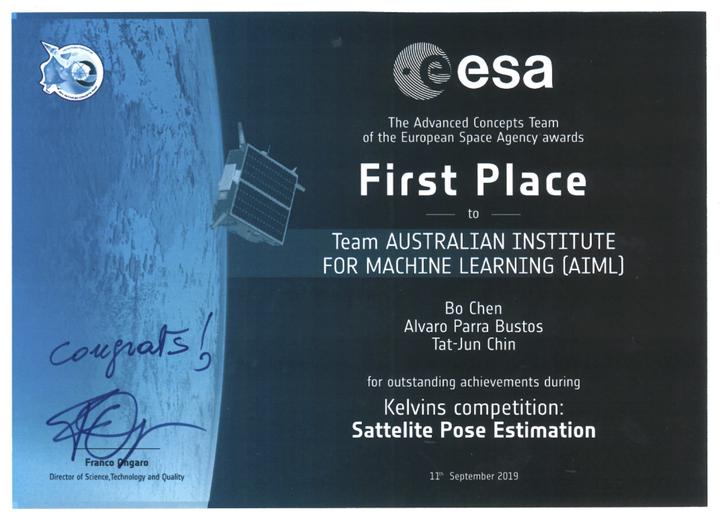Satellite Pose Estimation with Deep Landmark Regression and Nonlinear Pose Refinement

Abstract
We propose an approach to estimate the 6DOF pose of a satellite, relative to a canonical pose, from a single image. Such a problem is crucial in many space proximity operations, such as docking, debris removal, and inter-spacecraft communications. Our approach combines machine learning and geometric optimisation, by predicting the coordinates of a set of landmarks in the input image, associating the landmarks to their corresponding 3D points on an a priori reconstructed 3D model, then solving for the object pose using non-linear optimisation. Our approach is not only novel for this specific pose estimation task, which helps to further open up a relatively new domain for machine learning and computer vision, but it also demonstrates superior accuracy and won the first place in the recent Kelvins Pose Estimation Challenge organised by the European Space Agency (ESA).